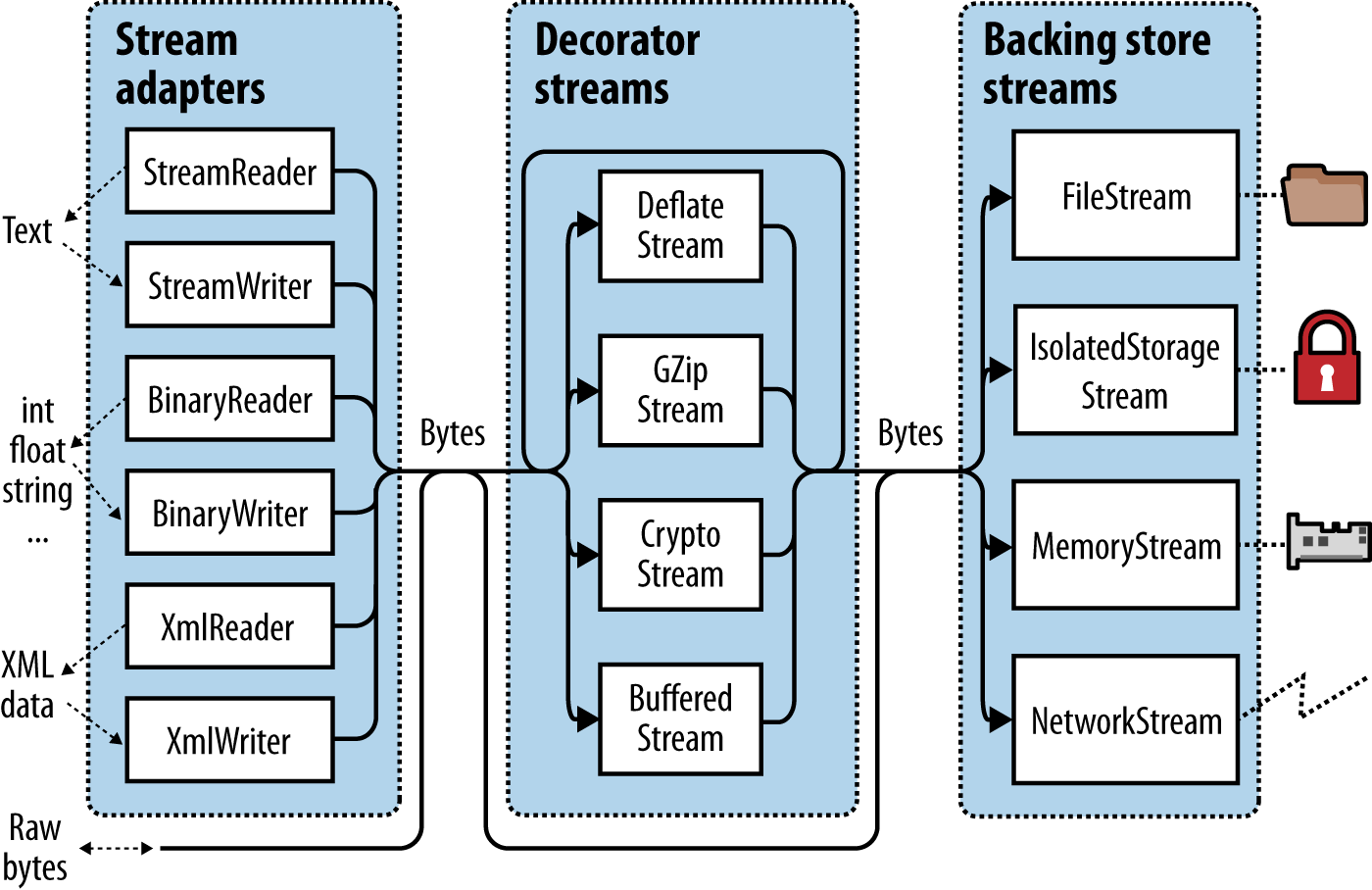Chapter 15. Streams and I/O
This chapter describes the fundamental types for input and output in .NET, with emphasis on the following topics:
-
The .NET stream architecture and how it provides a consistent programming interface for reading and writing across a variety of I/O types
-
Classes for manipulating files and directories on disk
-
Specialized streams for compression, named pipes, and memory-mapped files.
This chapter concentrates on the types in the System.IO namespace, the home of lower-level I/O functionality. The .NET Framework also provides higher-level I/O functionality in the form of SQL connections and commands, LINQ to SQL and LINQ to XML, Windows Communication Foundation, Web Services, and Remoting.
Stream Architecture
The .NET stream architecture centers on three concepts: backing stores, decorators, and adapters, as shown in Figure 15-1.
A backing store is the endpoint that makes input and output useful, such as a file or network connection. Precisely, it is either or both of the following:
-
A source from which bytes can be sequentially read
-
A destination to which bytes can be sequentially written

Figure 15-1. Stream architecture
A backing store is of no use, though, unless exposed to the programmer. A Stream is the standard .NET class for this purpose; it exposes a standard set of methods for reading, writing, and positioning. Unlike ...
Get C# 6.0 in a Nutshell, 6th Edition now with the O’Reilly learning platform.
O’Reilly members experience books, live events, courses curated by job role, and more from O’Reilly and nearly 200 top publishers.

